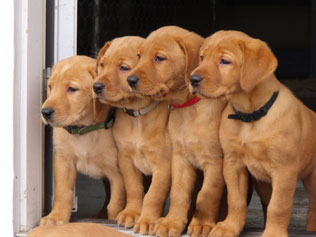The normal horse's small intestine is about 75 feet long. The normal horse's large intestine is about 12 feet long.
A horse will produce 12 gallons of saliva a day to aid in digestion of hay.
Horse's cannot breathe through their mouths and cannot vomit.
The top speed of a Horse is about 45 Mph (70 Kph). A horse walks at about 3 to 4 miles per hour, so a three hour ride will cover about 9 to 12 miles.
Horses have the largest eyes of any land animal.
Horses and humans are the only animals that sweat through their skin for cooling.
While walking a horse consumes 1 Liter (.25 gallon) of oxygen a minute but at aracing gallop the horse takes exactly 1 breath per stride and consumes nearly 60 Liters (15 gallons) of oxygen per minute
Horse of average size has approximately 50 pints of blood (28 liters) which circulate through his system every 40 seconds.
A horse uses more energy while lying down than it does while it is standing up.
Horses have a stay apparatus in their legs which allow them to sleep while standing without falling over.
A horse uses much more energy swimming than running. A 500 yard swim is like a mile run for a horse.
Horses have spiral shaped patterns in their hair that is called Whorls. These are unique as fingerprints. Some horse registry still use this for identification of horses.
Horses can communicate how they are feeling by their facial expressions. They use their ears, nostrils, and eyes to show their moods. Beware of a horse that has flared nostrils and their ears back.
A horse is usually not considered to be a "horse" until it is 5 years old. Before that, males are known as colts and females are known as fillies. However, it is still acceptable to call a colt or filly a horse.
Horses height is measured in units known as "hands." One hand is equal to 4 inches. A horse is usually considered to be 14.2 (14 hands, 2 inches) or taller when mature. Anything under 14.2 when mature is usually considered to be a pony.
Adult female horses (mares) usually have 36 teeth. A mare may have up to 40 teeth if she happens to have any canine teeth, which is possible but less common. Adult males have between 40 and 44 teeth. (These figures do not include wolf teeth.)
Horses have eyes on the side of their head, like most prey animals (Deer, sheep, etc). This is so they can see greater area around them to identify predators. Predators, like humans, dogs and wolves have eyes in front of their head so they can focus and catch prey animals. Eyes in front give better depth perception but less peripheral vision. Horses will often move their head up and down to try and focus on things. This is why collecting and holding a horses head tucked will often cause a horse to stumble or fall.
Colts are carried on average about 4 days longer than fillies
The average horse's heart weighs approximately 9 or 10 pounds.
A newborn foal can stand up within an hour of being born and can keep up with the rest of the herd within 24 hours!
Most foals are born at night under the cover of darkness and away from preying eyes and possible danger. Mares will clean the foal and relocate quickly to move away from the afterbirth, which may attract predators. By having the baby at night it does not have to worry about keeping up with the herd since the herd settles down for the night.
Horses can drink up to ten gallons of water a day.
HIPPOPHOBIA or EQUINOPHOBIA = Fear of horses.
The average life span of a horse is 20-25 years, but some will live into their 30's.
When first born, foals cannot eat grass because their legs are too long to reach it.
Horses are mammals in the same family as zebras, mules and donkeys.
Horses come in a variety of colors.
A horse will eat 18 to 20 hours a day in the wild or in their natural environment.
A horse has approximately 205 bones. Most horse breeds have 18 ribs, 6 lumbar vertebrae and 18 tail vertebrae. Arabian horses only have 17 ribs, 5 lumbar vertebrae and 16 tail vertebrae.
Horses sleep between two and three hours per day. Only 45 minutes of this sleep time is spent lying down.
A dark brown stripe running the back of a horse is commonly called a dorsal stripe or eel stripe.
There are basically four breeds of Horses: (Coldbloods, Hotbloods, Warmbloods and Ponies)
Coldbloods: These are drafts and larger horses which come from cool, damp weather where rich grazing is produced. This breed is large and strong. (Percheron, Clydesdale, Friesian, Belgian Draft)
Hotbloods: The Arab is a good example of a Hotblood who usually come from the Middle East and North Africa. These area have poor grazing and extreme climate which produced a light and fast horse. (Arabs, Barb and Thoroughbreds)
Warmbloods: These were produced by crossing hotbloods and coldbloods. These are considered to be stronger and faster and more flexible working breeds.(Warmblood, Hanoverian, Trakehner, Morgan, Quarter, Appaloosa, Foxtrotter and Mustang)
Pony: Smaller horses which are normally not taller then 14.2 hands (57 inches). Ponies tend to have shorter legs and be stronger in relation to their size. They are considered to be sturdy, tough and independent. (Shetland, Welsh, Haflinger and Fell)







